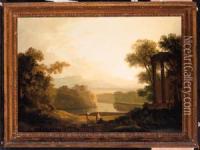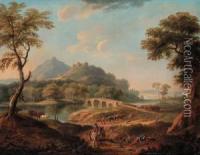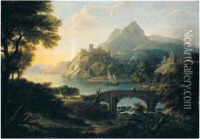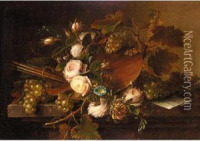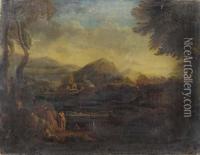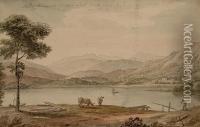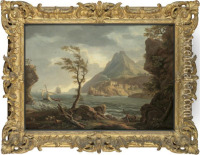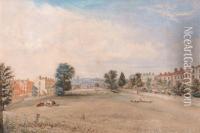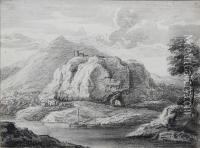Coplestone Warre Bampfylde Paintings
Coplestone Warre Bampfylde was an English gentleman, artist, and landscape gardener, who lived during the 18th century. Born into the affluent Bampfylde family in Somerset, England, in 1720, he was imbued from an early age with a deep appreciation for the arts and the natural beauty of the English countryside. His upbringing in the rural yet cultured environment significantly influenced his future endeavors in both art and landscape gardening.
Bampfylde's education and early adult life provided him with a broad understanding of classical literature and aesthetics, as well as an exposure to the burgeoning Romantic movement in art and literature. It was during this period that he began to develop his skills as an artist, focusing primarily on landscape painting and drawing. His works, characterized by their detailed depiction of natural scenes and a keen eye for the interplay of light and shadow, gained him a modest reputation among his contemporaries.
In addition to his artistic pursuits, Bampfylde is perhaps best remembered for his contributions to the field of landscape gardening. Influenced by the principles of the Picturesque – a concept that sought to arrange landscapes to mimic the qualities of fine art – Bampfylde transformed the grounds of his family estate, Hestercombe House, into one of the most celebrated examples of the English landscape garden. His work at Hestercombe involved the creation of a variety of naturalistic features, including lakes, cascades, and carefully curated woodland walks, all designed to enhance the beauty and romantic appeal of the landscape.
Despite facing personal difficulties, including financial strain and social isolation in his later years, Bampfylde continued to work on his artistic and landscaping projects until his death in 1791. His legacy, particularly the gardens at Hestercombe, endures as a testament to his vision and creativity. Today, Bampfylde is recognized not only for his contributions to the development of the English landscape garden but also as a noteworthy figure in the history of British art, particularly in the realm of landscape painting.

